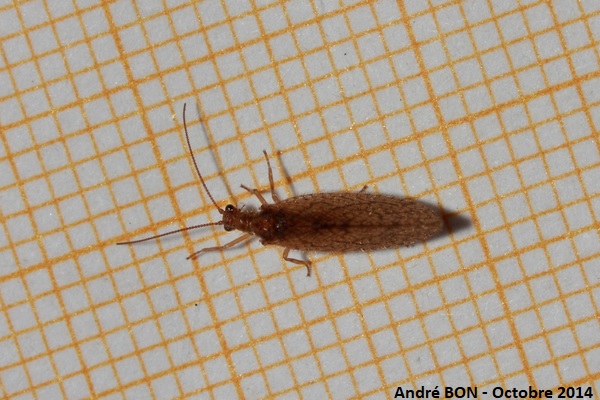

| Micromus angulatus (Stephens, 1836) |


|
|
Scientific name: Micromus angulatus (Stephens, 1836) Common name: French name: Order: Neuroptera Family: Hemerobiidae Wingspan : Body size: 6 to 8 mm; Wingspan: 13 to 17mm. Biotope: Grasslands, low growing vegetation, woodland edges. Geographic area: Holarctic region, Europe, north of the United States and Canada. Observation period : April to October. |
The net-winged insects show well developed wings with a dense network of veins. These wings are held roof-like over the body when at rest. The members of the Hemerobiidae family have similar shaped fore wings and hind wings (the hind wings are not enlarged at the base). The antennae are long and thread-like. The costal veinlets are ramified. I have found seven genera belonging to this family and listed as present in France: Drepanepteryx, Hemerobius, Megalomus, Micromus, Psectra, Sympherobius and Wesmaelius. The net-winged insects of the Micromus and Psectra genera differ from the other ones by the lack of a recurrent veinlet (small vein at the base of the costal area on the fore wing, strongly curved towards the base). Micromus angulatus's fore wings shows 4 branches running from the radial vein. The wings are brownish with reddish brown longitudinal veins. The cross veins draw two dark oblique serrated lines. There are a few brown spots close to the inner edge. |
| [To know more about the Micromus angulatus] [Next picture] [Top] |

|
You can clearly see the wings' veins with the dark oblique and serrated cross lines on this picture. |
| [To know more about the Micromus angulatus] [Previous picture] [Top] |

|
A small sheet of graph paper and that's it. The length of the fore wing is about 7mm, so the wingspan is 14mm. |